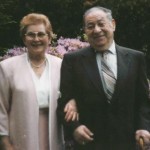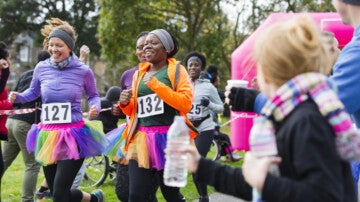Yes, Walks and Races are Worth the Effort

Before we dive in, I want to preface that this blog post won’t be offering fundraising tips. Instead, I’d like to open up a discussion about the true value of organizing walks and races. Are these events really worth all the time and energy we put into them? I’m sharing my perspective, and I genuinely hope you’ll share yours as well. Let’s get the conversation started—your thoughts and experiences matter!
Here’s my two cents. As an industry I think we should be careful with comparing walk events with marathons, triathlons, 3-days, etc… A walk event usually described as a non-competitive 1 to 3 mile walk for all to participate is quite different than training 3-4 months to run 26.2 miles. In addition to the difference in the competitive aspect, most walks don’t require a registration fee or fundraising minimum. I don’t think you can relate the decline of the CROP walk with growth of the Avon 2-day walk. It’s not an apples to apples comparison. I understand the author is making the case that “quaint” or less expensive events are on the decline, while flashy ones with high costs to organizations are increasing. If quaint events are on the decline, doesn’t that have something more to say about who we as a society? Why do we need to receive a gift in order to give? And, finally I’m wondering are we bored with walk events? I don’t think so. According to the Run Walk Ride Fundraising Council’s Top 30 events of 2010, 10 event programs saw a decline; walks, marathons, school events and bike rides where all represented.
I live in Washington, DC. Spring and fall weekends are packed with fundraising events. But, instead of focusing on the over-saturation of events, why not focus on what differentiates one event from another; the cause. More than fundraising minimums and registration fees, I think what separates walks from marathons is the connection to the cause. Since every organization has a walk this says to me that the individuals who participate in these events are in it for the cause. They have choices and selected your event–your organization. I will say that years ago I think individuals selected a marathon program based on “the perks” i.e. training program and travel, but with the increase in marathon training programs that is changing too.
The article also mentions the non-profit staff needed to run events. “Charities, meanwhile, have assembled massive in-house staffs to support the strategy. The Leukemia & Lymphoma Society, for example, says its Team in Training program employs nearly 350 people, full-time, to organize and train endurance-event participants who raise nearly $100 million a year.” The article did not include that about 40,000 individuals will participate in TNT this year. That’s a .008 staff to participant ratio.
Not to generalize, but event staff tend to be just as dedicated to the cause as the individuals participating in the event. Most of the non-profit employees I know have a personal connection and for those who don’t; one is quickly formed after hearing the emotional stories from participants.
While, events cost money (these days what doesn’t cost money) I think we’re forgetting another important factor. Events provide an opportunity to fight back when you feel helpless, for survivors to celebrate their survivorship, and to remember those who lost the fight. Maybe it’s a little idealistic of me, but I like to think that events aren’t just about raising money and organizations care about providing an outlet for constituents to “do something.”
As a former fundraiser, who’s seen the good, the bad and the ugly of events, I still participate. I understand that part of the funds I raise will cover administrative and logistics costs. And, I’m fine with that. When fundraising for an event, if I’m asked by my donors, I tell them there is a cost to fundraising. Maybe organizations should educate participants and donors about the costs, but is that really a good idea? Or, is it better to accept that there are costs associated and instead of wondering how much will go to this or that, just know that 100% of your donation is helping the cause.
While some organizations do a better job than others when it comes to budgeting, at the end of the day I participate and raise funds because of personal reasons. I lost my grandmother to Alzheimer’s disease. She was an amazing woman. While she’s no longer with us, I remember her lessons and kind spirit. I couldn’t do anything to stop the progression of Alzheimer’s, but I can raise funds and hope that one day Alzheimer’s will be not just curable but, preventable.
This hope is fueled by, what I see in the cancer world. Cancer used to be a death sentence- an incurable disease, but today that’s not always the case. While not everyone wins their battle with this nasty foe, many do. Do you know a cancer survivor? I know many and my life has been enriched my knowing this fighters.
The world works in mysterious ways. A few days ago, I read an article in Runner’s World about The Leukemia & Lymphoma Society’s TNT program. As a former LLS staff member, I was very excited when I saw a woman wearing a TNT shirt on the cover. The article shares the program’s fundraising success, but what’s more exciting is it also shares the impact of those dollars. Research funded by LLS, raised by event participants, helped lead to the development of the breakthrough cancer drug Gleevec, first approved to treat patients with CML (chronic myelogenous leukemia); it’s now being tested for patients with breast, ovarian, prostate, nerve, brain and small cell lung cancers.
I’ll leave you with a final thought and I hope you will share yours. Where would research and outreach programs be if it wasn’t for the billions raised through events?

If you’re interested – the image I’ve included is of my grandparents, Selma and Morton Braiterman. My grandmother passed away in August 2002 from Alzheimer’s disease. My grandfather followed two months later; in our family we say they couldn’t be without each other. These two love birds inspire me everyday to enjoy life, to make the most of each moment and most importantly to be kind.



